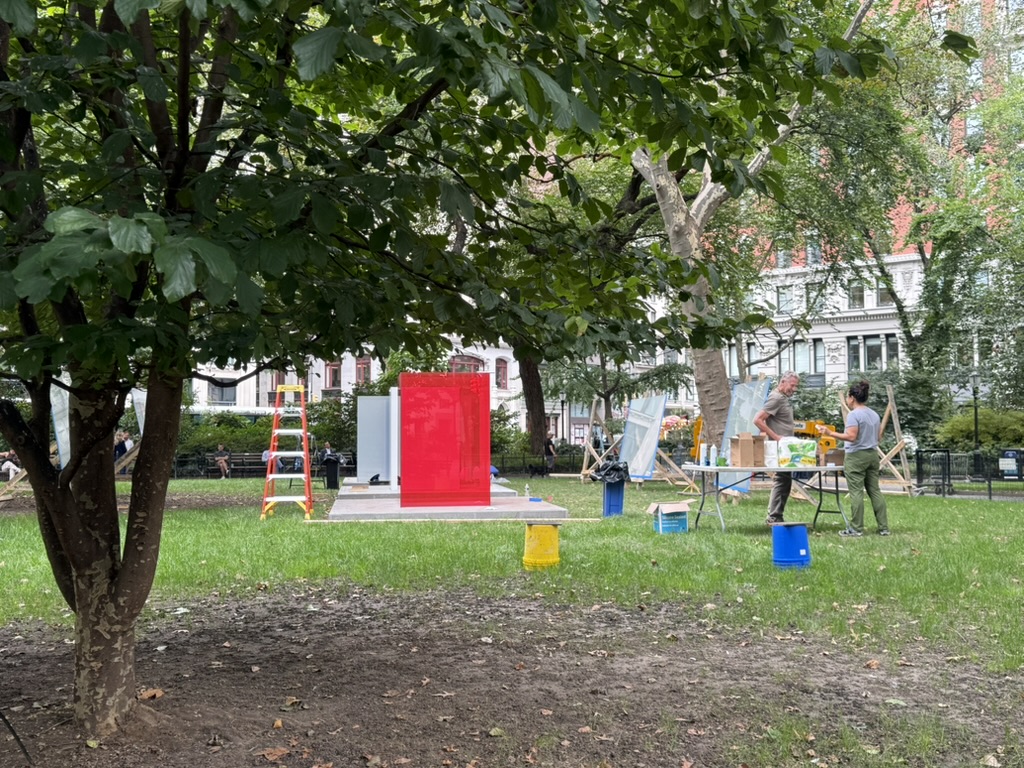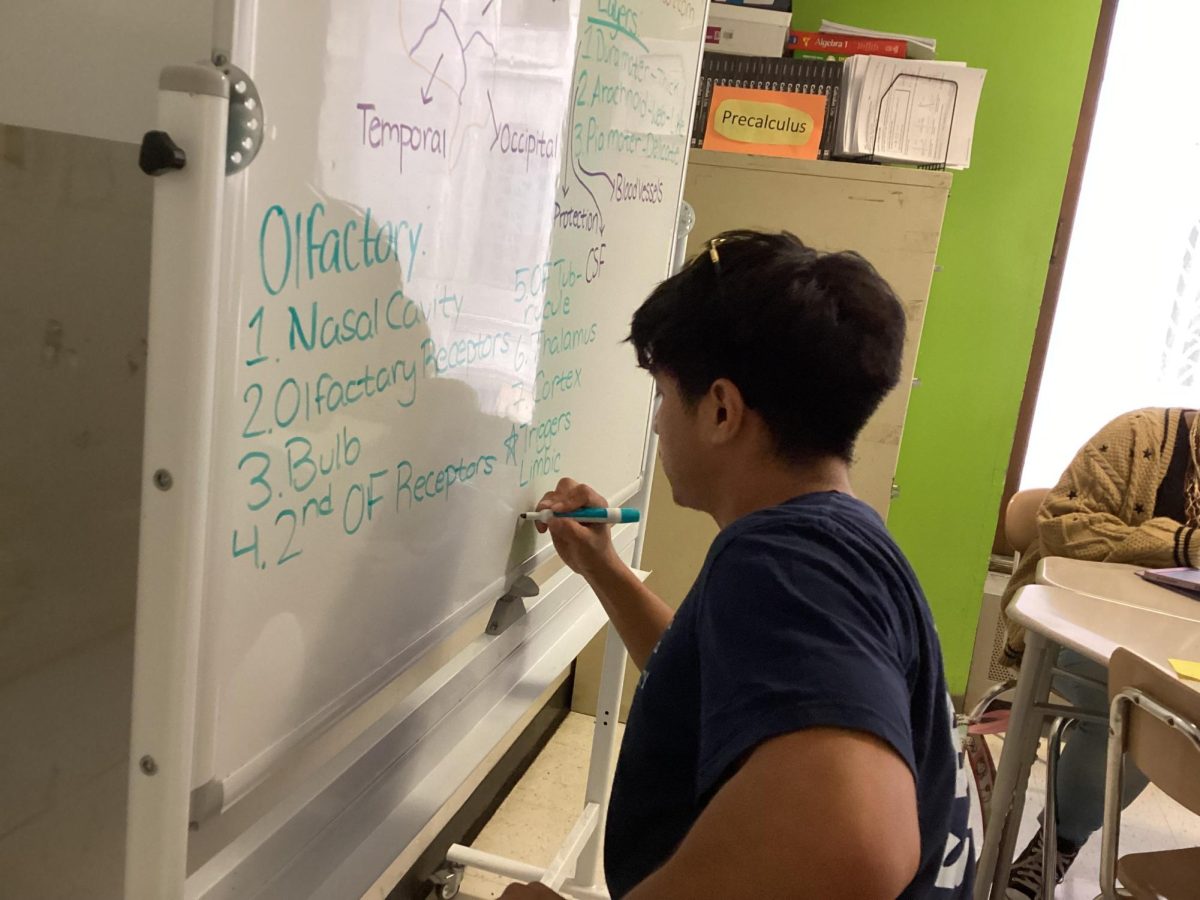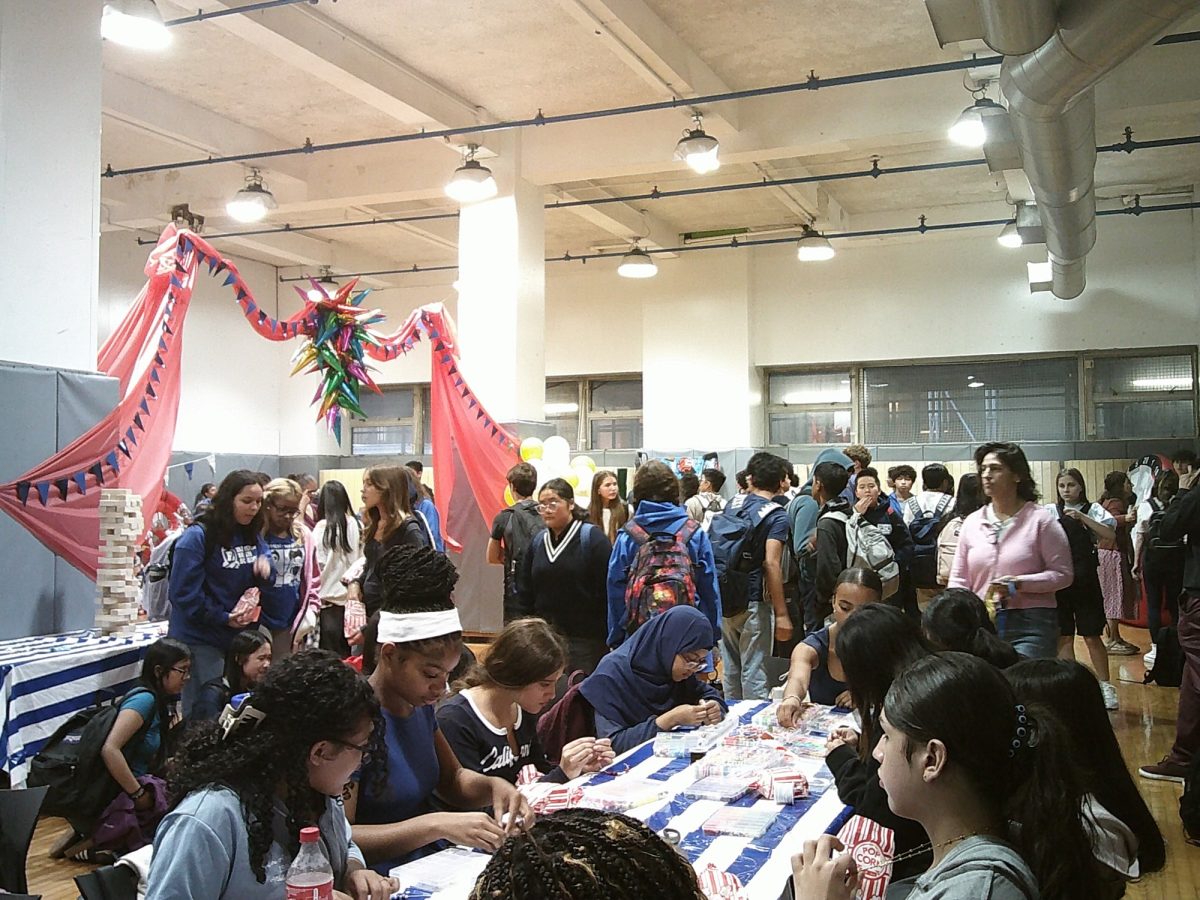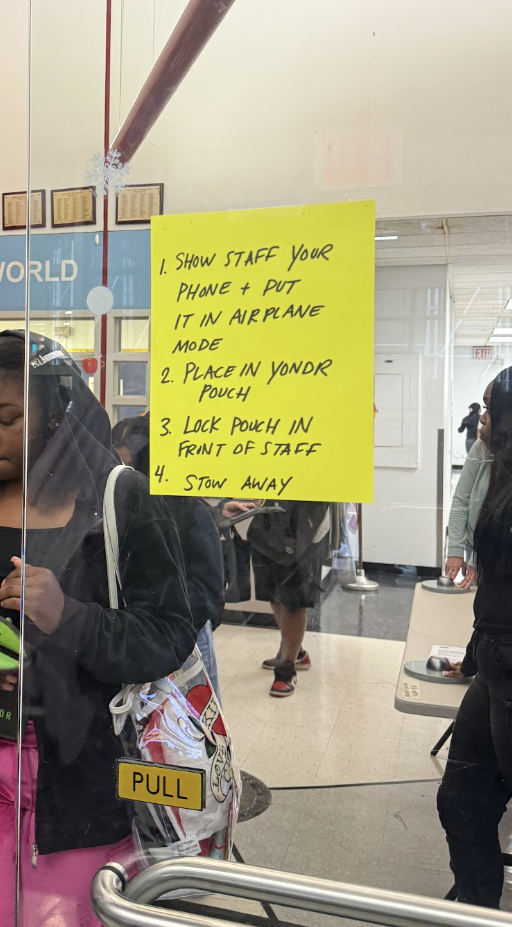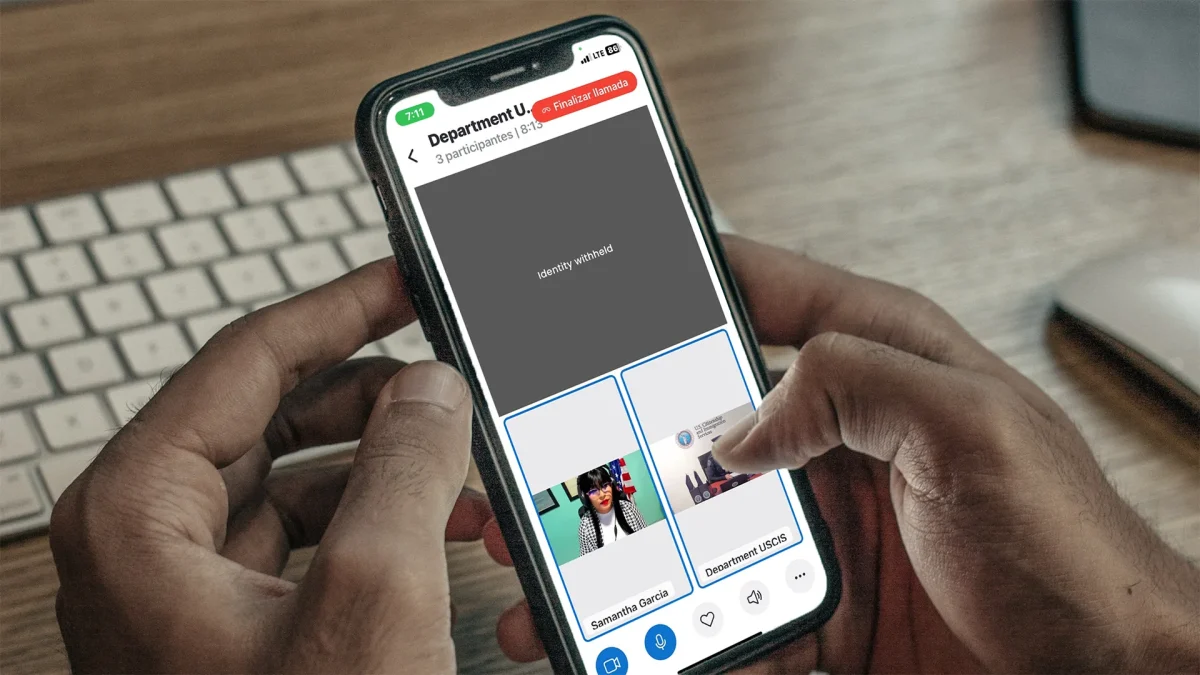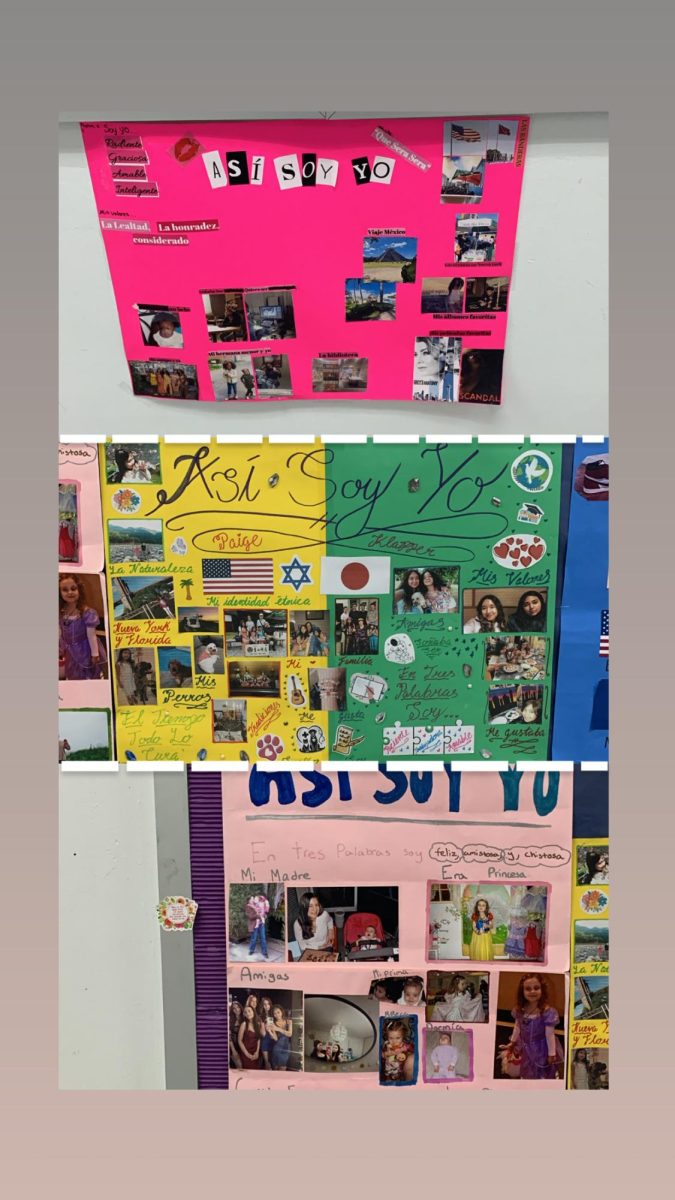Can You Survive Physics?
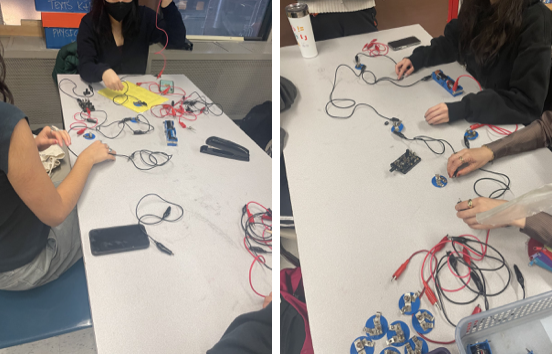
March 8, 2023
You are on a deserted island with your tribal clan and you must complete challenges to advance and gain tools. What are these challenges, you may ask? Your physics teacher hands you batteries, lightbulbs, and wires and you have to develop a hypothesis and conduct electricity.
If you were to walk into room 321 you would see a clear blue sky, a bright yellow sun, torches, clouds, fires, the ocean and luscious palm trees. Not a normal physics classroom I suppose. Seniors in Physics are currently in the survivor unit where we are expected to complete daily challenges and compete with other tribes to gain immunity. This unit is very similar to the show “Survivor” where contestants are sent to an island in Fiji and are expected to work with their tribes to compete in “immunity challenges” and one person will eventually win 1 million dollars.
Students are given the opportunity to work with their peers to learn about circuits and electricity when asked the question “how does VT (the voltage of the battery) relate to V1, V2, and V3 (the voltage of each of the resistors) in each of the following circuits?”. We first formulated our hypotheses and chose another tribe to challenge.
While in this challenge, students gain an understanding of both electricity and circuits but also how to effectively collaborate with their peers. Emina Pasic, a current senior in tribe Koru, says, “It is a really good opportunity to activate our critical thinking skills and collaborate with peers that you normally don’t.”
You may be wondering, what specifically do students learn while participating in the Survivor game? When Mr. Zimmerman hands each tribe some wires, three lightbulbs and a battery, the one objective is to make the lightbulb light up. Tribes then work together to learn collectively about circuits and electricity. More specifically, how to measure the voltage of each lightbulb based on the circuits. Sally Zhao, a senior in tribe Enewetak, claims, “I think it is a creative way to showcase our learning of circuits in Physics.” She further explains that she now has a stronger understanding of circuits and how batteries power electricity.
This experiment, when looking at it, looks incredibly complex. My tribe, Neiafu, was baffled when we were handed some wires, a singular battery and a lightbulb and were just expected to make it light up. However, after some hypothesizing and experimenting we realized it is not as hard as it seems. We observed the pattern of voltages and currents and specifically how the voltage split up. This posed the question, what exactly makes a complete circuit?
An uninterrupted path for electrons to travel from an energy source (such as a battery or household power source), to a device, and then return to the source is known as a complete circuit. If we disrupt that path, the flow of electrons stops, our circuit no longer provides us with energy, and the devices lose power.
One day, Mr. Zimmerman decided to show our class UFO balls and how they require a complete circuit to light up. As a class we all casually joined hands in a circle and noticed how it requires a complete circle of electricity in order to it work effectively. This activity gave us background information regarding circuits and allowed tribes to notice how voltage is equally distributed throughout each circuit in our challenges.
These observations were also reflected in the tribe circuit experiment in that in order for circuits to work there had to be a complete circuit, and the circle wires had to be connected to the circuits on the battery in order to complete a circle of electricity.
This physics unit has not only made the senior class closer and able to work together with peers but it also was an engaging way to learn about electricity and circuits. “I am enjoying it because it is a fun team building exercise”, Maureen Blachman in tribe Jabari… says. “It has been great working with my classmates.” Ella Franceschini in tribe Enewetak adds.




